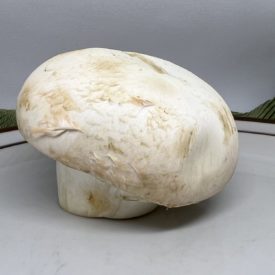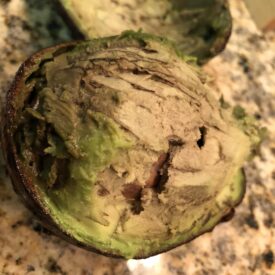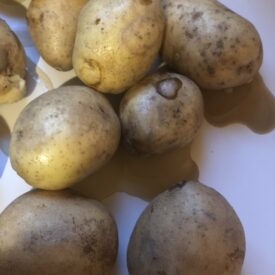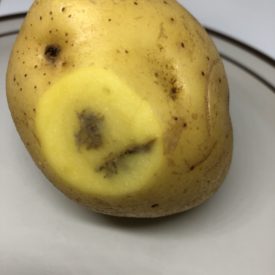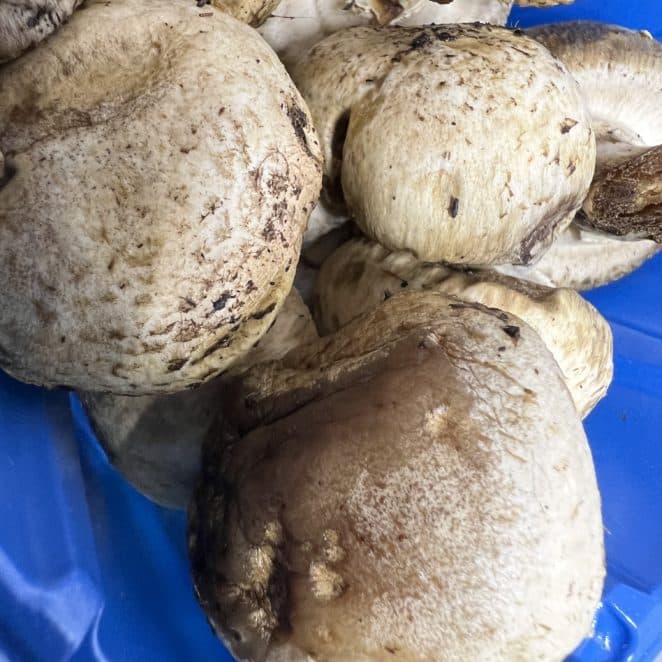
What you see/feel: Your mushrooms are slimy.
What it is: Your mushrooms are sporting a bacterial biofilm!
Eat or toss: If the mushrooms are very slimy and/or they have an odor, they aren’t good to eat. If they’re on the cusp of sliminess you might be able to salvage them in a high-heat preparation like a soup. Trust your instincts and read on for more.
Are slimy mushrooms safe to eat?
Slime certainly has its place. Whether it’s helping slugs slide across surfaces, telling game show contestants that they’ve lost or oozing ominously under a door in a horror film, slippery gloop plays an important role in our day-to-day lives.
But one place you don’t want to encounter slime is on your mushrooms. If your carton of buttons or tray of portobellos is a bit glossier and more slippery than you expected, it’s a sign that a biofilm (essentially a dense layer of bacteria) has turned your food into a Slip ‘N Slide of microbial growth. While you don’t want to eat these mushrooms, the slime itself is a harmless substance the bacteria produced to help protect and knit together its growing community.
Mushroom slime probably comes from “spoilage bacteria”
The types of bacteria that feast on mushrooms typically aren’t human pathogens so they’re unlikely to make you sick. The decomposition caused by these “spoilage bacteria” could, however, make it easier for bacteria that cause human disease to flourish and be more likely to infect a person. But that would require the mushrooms to be contaminated. Such contamination is unlikely, though not impossible, if they’ve been properly handled. Also worth considering: once contaminated with human pathogens, mushrooms–or any food for that matter–could make you sick even if no slime has developed.
If you’re seeing very slimy mushrooms the most likely consequence is that the mushroom-eating bacteria have taken over so much that they’ll negatively affect the flavor of whatever you’re preparing. At that point, the mushrooms will probably smell bad, which is another sign that it’s time to dump them.
What if the mushrooms are just a tiny bit slimy?
If your mushrooms are just a little slimy and smell fine, you could use them in a dish that requires high heat cooking, which should kill any problematic bacteria. Penn State food science professor Luke LaBorde, who has studied food safety risks associated with mushrooms, suggested a soup.
Why do mushrooms feel slimy when you’re washing them?
Often, I find that my mushrooms look slime-free when I first take them out of the fridge, but feel extra slippery, maybe even slimy, when I rinse them with water. LaBorde said this isn’t anything to be concerned about; it’s possible the vaguely slimy feel of wet mushrooms comes from the trace amounts of microbes we expect to be on all mushrooms. Or, maybe it’s just me.
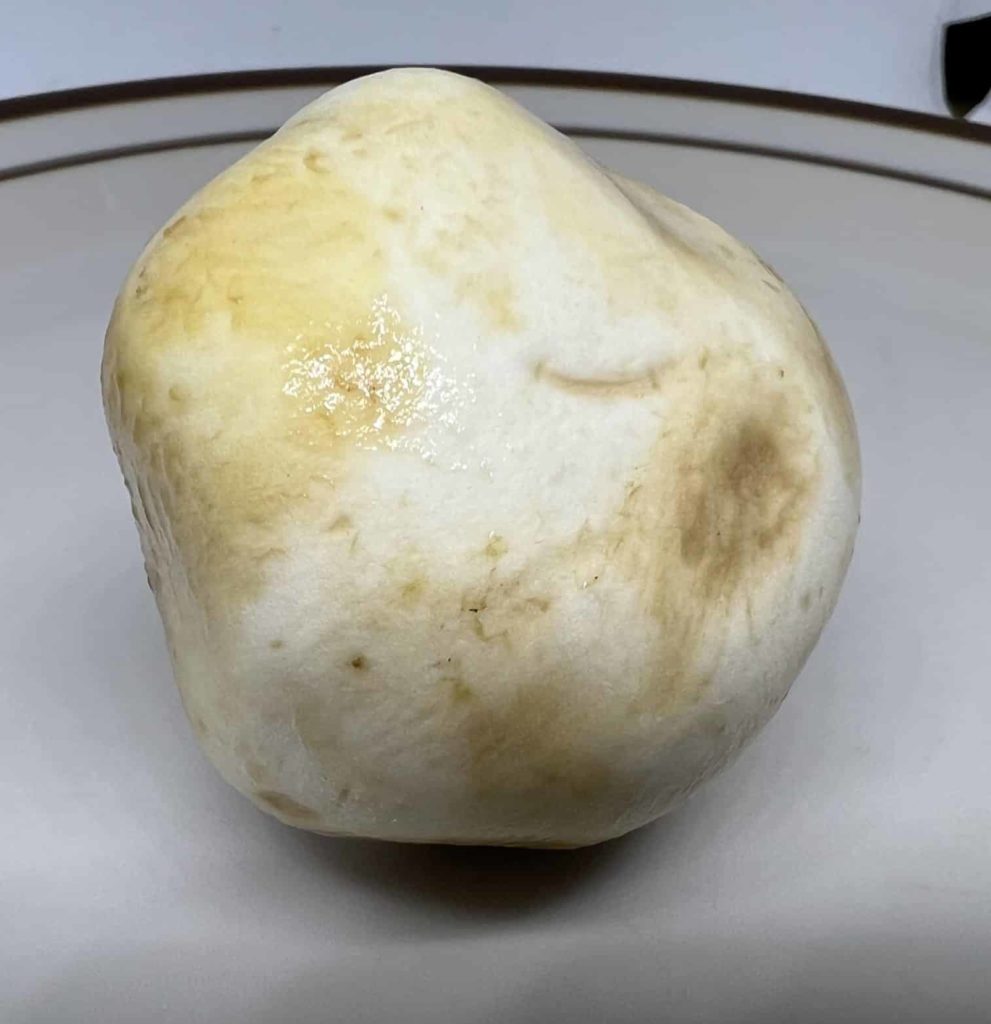
How to prevent mushrooms from getting slimy
Store-bought mushrooms are usually only good for three to seven days. The Mushroom Council recommends refrigerating them in their original packaging or in a porous paper bag. Basically, mushrooms need a humid environment to stay fresh, but need to be kept relatively dry to hold off bacterial growth as long as possible.
Mushrooms are extra vulnerable to bacterial growth
Mushrooms aren’t alone in their tendency to develop slime. Whenever neglected fresh produce develops a slimy coating, a biofilm is probably at work. But mushrooms develop slime faster because they don’t have a protective outer skin (like apples and potatoes, for example); the bacteria get down to business faster.
The fact that mushrooms don’t have a protective outer skin is also why you, if you’re going to rinse them (my preference, though opinions vary), you shouldn’t do so until just before you use them. While an apple skin provides a kind of raincoat that water droplets slide off of, mushrooms easily absorb water, which spoilage bacteria think is just great.
Every mushroom, and well, basically everything, has harmless microbes on its surface. It sounds gross, but it’s not a food safety issue; it’s simply how the world works.
“Bacteria, yeasts, and molds can be found on any surface, including mushrooms,” LaBorde explained. “We just want to make sure that the wrong kind of bacteria are not present, such as E. coli, salmonella, listeria and other human pathogens. Mushroom growers have standards in place to prevent contamination of mushrooms and consumers should remember to wash their hands before handling them and cut them on a clean cutting board that has not been used for meat and poultry.”
NOTE TO READERS: The image at the top of this post features kind of slimy mushrooms, but we’d love to show off some really, really slimy ones. If you find yourself with some, we’d love if you snapped a photo and sent it to [email protected]. Thank you!
SOURCES:
- Luke LaBorde. Professor of Food Science and Extension Specialist. Pennsylvania State University.
- What are biofilms? Live Science. Aparna Vidyasagar. December 21, 2016
- Mushroom. Vegetable Produce Facts – English. Trevor V. Suslow and Marita Cantwell. Department of Plant Sciences, University of California, Davis. Postharvest Center. University of California.
- Mushrooms 101: How to Select and Store Mushrooms. The Mushroom Council.
- FoodKeeper App. Mushrooms. FoodSafety.gov.
- Mushrooms. Store It. SaveTheFood.com.

